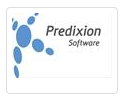Over the years, many business intelligence (BI) tool styles have emerged to match the varied ways that business people need to analyze data across broad product categories that include guided analysis and reporting and self-service BI and analysis. The best practice for selecting a BI analytics tool is to determine what data your business people are going to analyze and how, so you can provide them with the right kinds of tools.
Over the years, many business intelligence (BI) tool styles have emerged to match the varied ways that business people need to analyze data across broad product categories that include guided analysis and reporting and self-service BI and analysis. The best practice for selecting a BI analytics tool is to determine what data your business people are going to analyze and how, so you can provide them with the right kinds of tools. The decision of what tool to buy shouldn’t be based on which product has the most features, but rather which product enables the types of analysis your users need and will use.In this article, we’ll take a look at how to determine what BI analytics tool categories and styles are the best match for your business and technical use cases. To support that objective, we will identify the key attributes that define those use cases.
BI analytics tools: No one-size-fits-all
Selecting the right BI analytics toolfor your enterprise could mean the difference between the software becoming an integral part of your business decision-making — or becoming shelfware and the business declaring your BI program a failure. The fundamental mistake many enterprises make is assuming there’s one BI product that’s right for all; as a result, they base their selection on an extensive features checklist instead of real business needs.
Considerations for creating your BI business use cases
The key data or analytical characteristics that need to be considered in creating your BI business use cases and then selecting the appropriate BI categories and styles include:
- Data sources. Will your business people use a predefined set of data, such as from a specific business application or data warehouse, or will they determine what data they need as they proceed with their analysis?
- Performance measures. Are your company’s performance measures, also referred to as key performance indicators or business metrics, already defined and accepted or will your business users need to create them on the fly?
- Recurring vs. one-time analysis. Do your business people need a recurring snapshot of operational performance on a daily, weekly, monthly or quarterly basis or will the analysis be done just once?
- Visual analysis. Do your business users prefer tabular reports, basic business graphics such as bar, line and pie charts, or more advanced visualizations such as heat maps, scatter plots and geospatial mapping?
- Spreadsheet usage. Are spreadsheets widely used for analysis and are they likely to continue to be used in the future? Are the spreadsheets being used to integrate data from various sources or perform sophisticated business rules or advanced calculations?
- Business knowledge of data. Are your business users familiar with the data, know how different data sources are related to each other and understand data anomalies such as quality issues and data gaps?
- Business analytical skills. How sophisticated are your business users, analytically? The most sophisticated users will be highly proficient in various analytical techniques and possibly even in statistics, while those on the other end of the spectrum will rely on guided analysis limited to filtering and drill-down functions.
Selecting the right BI category and style
The following BI use cases are examples that can assist you in selecting the appropriate BI category and style. Many enterprises will have multiple BI use cases, so it’s important in those situations to match the right BI category and style to the right business users. Although it may seem that giving every style to every business person is a good thing, the reality is that it will likely overwhelm them and prevent them from using the BI tools effectively — or at all. It’s like the story of Goldilocks: The software shouldn’t be too hot or too cold, but just right.
BI use case: Operational snapshots. The business needs a recurring snapshot of operational performance on a daily, weekly, monthly or quarterly basis. The performance measures and the data that needs to be reviewed are well-defined, and the analysis work typically involves period-over-period performance comparisons or trends. Business people may filter data based on agreed-upon criteria, but they primarily want to quickly do some analysis and then get back to their jobs. To make that feasible, they need tabular reports and easy-to-grasp graphics such as basic bar and sparkline charts. Data consistency is key, with IT integrating data as necessary in the background.
Recommended BI category and style: Guided analysis/reporting tools
BI use case: Limited exploration. Similar to the first use case, the business needs a consistent set of data and performance measures available on a recurring basis, but here the users want to do limited data exploration themselves. They still primarily require a mix of basic business graphics and tabular data, but they also need to be able to drill down into the information for further analysis. That combination can best be accomplished through BI dashboards that are a mash-up of several related graphics with underlying detailed data that users can access, filter and analyze. Dashboards have traditionally been created by IT, but an increasing number of them are now being built by business analysts using data discovery tools (more on this later).
Recommended BI category and style: Guided analysis/dashboards
BI use case: Packaged applications. Corporate performance management (CPM) applications are built to support either specific industries, such as healthcare, or business functions such as finance. The most prevalent applications built into CPM are forecasting, planning and budgeting. CPM applications are often linked to specific enterprise operations systems. Although this is a niche market, if the application matches your enterprise’s needs, then there are significant advantages to buying packaged software that incorporates industry best practices into its data and analytical processes. However, the trade-off may be a lack of flexibility matching your enterprise’s unique needs.
Recommended BI category and style: Guided analysis/corporate performance management
BI use case: Spreadsheet integration. Many business people use spreadsheets to gather data from various sources, integrate the data and then create reports. The gathering and integration processes are often time-consuming, involve many manual processes and require integration techniques that may not be known to most business people. Spreadsheet integration tools expand beyond simply importing data in the same manner as CSV or text files by accessing integrated data sources and enabling data blending. In this scenario, business people can continue to use spreadsheets as a BI analytics tool but rely on the spreadsheet integration tools to perform the gathering and integration that was time-consuming and error-prone. Business users often favor this approach because they feel more productive using spreadsheets rather than a different BI tool for analyzing data. If they’re devoted spreadsheet users, it will be difficult to get them to shift — and, quite frankly, they may be able to do more advanced analysis than various BI analytics tools would offer.
Recommended BI category and style: Guided analysis/spreadsheet integration
Editor’s note
This article is part of a series on BI analytics tools. The first article examined the differenttypes of BI analytics tools in the enterprise; this article discusses several use cases for BI analytics tools; part three offers insight into the process of buying BI analytics tools; and the last article examines the top BI analytics tools vendors in the market.
BI use case: What data is relevant isn’t known prior to analysis. In this use case, not all the data sources or performance measures are predefined and most analysis is done just once. The users are business analysts who are self-sufficient in regards to getting and analyzing data — they’re both data- and analytics-savvy. In fact, they may have created data shadow systems for their business peers and are the subject-matter experts for IT when they’re examining data source systems. Data shadow systems are spreadsheets used to gather, integrate and analyze data from various sources. They often grow from a simple spreadsheet used to gather data for a single data source to a complex application involving hundreds of spreadsheets or worksheets pulling data and integrating from a myriad of data sources. BI ad hoc query tools were built for business analysts who need to do intensive data exploration to determine what data is relevant to their analysis.
Recommended BI category and style: Self-service BI/ad hoc analysis
BI use case: Performance measures aren’t defined prior to analysis. In this case, there’s a known collection of data sources, but performance measures may need to be defined while the analysis is being done. As above, the analysis work may be one-time in nature and typically requires savvy business analysts. However, these analysts aren’t proficient in using query-based tools — they’re more comfortable with spreadsheets. The best match for them is online analytical process (OLAP) or pivot table analysis tools that are just like working in a spreadsheet.
Recommended BI category and style: Self-service BI/ OLAP or pivot table analysis
BI use case: Not all relevant data sources or performance measures are known.
This is another example in which not all the relevant data sources or performance measures are known at the beginning of analytics applications, so business analysts will need to blend in data and define performance measures during the analysis process. In doing so, they may need to engage in extensive data exploration work — but they typically aren’t inclined toward using either an ad hoc query tool or OLAP-oriented software. They prefer an easy-to-use BI product rather than one with a steep learning curve, which points toward data discovery tools. Such tools may include data visualizationcapabilities, but usually include built-in dashboard capabilities that business analysts can use to deliver analysis results to business managers on either a one-time or recurring basis.
Recommended BI category and style: Self-service BI/data discovery
BI use case: Visual-oriented analytics. In this case, the business analysts need advanced visual analytics capabilities to help them analyze data and present information to others. Advanced visualizations include heat maps, scatter plots, geospatial maps, Gantt charts, histograms and bubble charts. This BI style is typically not sold separately but rather is bundled with other BI styles. If your business people need the guided analysis BI category, then examine dashboard products that have advanced visualizations rather than the basic business graphics. If your business users are looking for the self-service BI category, then data discovery products are your best choice.
Recommended BI category and style: Advanced data visualization







